One of the best parts about having an RV or travel trailer is that you can keep perishable food items refrigerated while you’re camping. This is simply not a luxury that most tent campers or van lifers don’t enjoy.
So, the refrigerator is the most accessed appliance in your rig and is the hub of your RV kitchen to bring the comforts of home on the road.
But if you have an older RV or you’re undertaking an RV renovation project, you want to upgrade or replace your existing RV fridge with something better.
But which one??? And what should you look for in a travel trailer refrigerator?
Not everyone needs the same things out of an RV refrigerator. Some of you might prioritize having the most space possible.
Others might need an RV refrigerator that doesn’t require permanent power or gas connections so that you can move it around.
So, choosing a new refrigerator/fridge for your RV can be overwhelming with the vast array of choices. So when you pick a new fridge, it’s a matter of finding something that suits your style, space, and budget.
Luckily, you’ve arrived in the perfect place to learn everything you need to know about the best RV refrigerator options on the market today.
And our Buying Guide will also help you prioritize which features and specifications are most important to you when choosing an RV refrigerator for your motorhome, travel trailer.
Read on to find which RV fridge freezer is best for you.
8 Best RV Fridges & Freezers review in 2024
We’ve canvassed the market to review eight of the best RV refrigerator choices whatever you’re looking for a 2-way, 3-way, 12-volt, or even a portable one.
Our reviews include the major features and specifications for each model, but we’ve also highlighted several things we like and don’t like about each refrigerator so that you can get a quick snapshot of each of these RV refrigerators.
From fridge to freezers Here are the 8 best refrigerators To buy for your RV or camper:
1: Best Overall RV Refrigerator: Dometic DM2682RB1 Right-Handed RV Refrigerator
If you’re looking for an RV refrigerator that offers great versatility and durability, our choice for the best overall design on the market today is the Dometic DM2682RB1 Americana Plus Refrigerator.
This camper fridge offers a total of six cubic feet of storage capacity and is designed with right-handed doors.
This makes it a great option for RV kitchens that have the fridge space located to the left of the remainder of the cooking and sink space.
I like that this fridge has a full surround steel frame for added durability and it also features click locks on the handles.
This means you get an audible confirmation that the doors are actually closed before walking away, which has been an issue for me in previous RVs (resulting in food flying out of the fridge while driving!).
This RV refrigerator runs on propane gas or an electric power supply, and it can convert back and forth between the two with the touch of a button.
This maximizes efficiency while also keeping the contents of your fridge cool if you run out of one of those resources unexpectedly.
In terms of its desired electrical connection, you can either use a 12-volt DC connection or a 110-volt AC outlet.
So it gives you three-way versatility depending on the specific design of your RV.
A few more features of this fridge that are worth mentioning include its integrated climate control system and its LED light for illuminating the interior.
The climate control system allows you to program your desired internal temperatures for maximum efficiency and the LED also burns cooler than standard light bulbs, so it won’t be using too much energy or counteracting the efforts that the rest of the fridge is making to keep things cool.
Finally, the DM2682RB1 refrigerator comes with two crispers for keeping vegetables fresh and bottle holders in the door shelving for securing smaller containers.
Additionally, all of the shelves, trays, and door bins are removable and adjustable.
This allows you to customize your fridge’s storage layout and also makes it super easy to remove everything to clean the fridge.
Things We Like
Things We Don’t Like
2: Best 2-Way Refrigerator: SMETA Electric 110V/Propane with Freezer RV Refrigerator
If you want a new RV refrigerator that can run on either propane gas or 110-volt AC power, our choice for the best 2-way refrigerator is the SMETA SCD-185-2 Absorption Refrigerator because it’s available in multiple sizes to fit different RVs.
You can choose the smaller model with 6.1 cubic feet of interior storage capacity or the larger model with 9.4 cubic feet of capacity.
The dimensions of the smaller model measure 23.6” x 25.6” x 57.5” (depth x width x height) and the larger model has dimensions of 23.6” x 29.1” x 64.2” (depth x width x height).
The SMETA refrigerator has an upper freezer compartment and a lower refrigerator storage area.
The fridge is rated for temperatures between 32 and 50 degrees Fahrenheit while the freezer can hold an average temperature of 3.2 degrees Fahrenheit.
It also uses absorption technology to keep its contents cool rather than relying on a compressor.
This technology is super efficient, quiet, and also environmentally-friendly. It also has a longer lifespan than refrigerators that rely on compressor technology.
It actually consumes approximately 1.2 pounds of gas per day if running entirely on propane.
But the integrated electric/gas thermostat easily allows you to cycle between power sources and also includes an indicator light that alerts you of the propane flame is out.
This is a great safety feature that not many other two-way refrigerators include. Another thing I like about this refrigerator is the single large crisper bin at the bottom.
This gives you one convenient place to store all of your fresh vegetables.
And the shelves in the refrigerator compartment are adjustable so that you can fit taller beverage containers.
This adjustability also allows you to customize your ideal food storage layout inside the fridge.
Things We Like
Things We Don’t Like
3: Best 2-Way Runner Up: Norcold® Polar 2-way NA8LXR Refrigerator
If there were a few things that you didn’t quite like about the SMETA refrigerator, the Norcold Polar 8 LX Refrigerator is our runner-up for the best 2-way refrigerator because it offers industry-leading storage capacity and it features an upgraded, modern appearance.
This refrigerator has a whopping eight cubic feet of storage capacity and boasts external dimensions measuring 24” x 23.5” x 59.875” (depth x width x height).
This particular model includes an adjustable thermostat that allows you to dial in the temperature of both the freezer and fridge compartments according to your personal preference.
The controls on this refrigerator are also located at eye level so that you won’t have to strain your neck or get on your hands and knees to adjust its settings.
It also has exceptional seals so automatically limits the build-up of frost and condensation on the back wall, which is a problem for some other RV refrigerator models.
The Norcold Polar also boasts a right-swing door, which makes it ideal for RV kitchens where the refrigerator cut-out is located to the right of the cooktop, sink, and other kitchen appliances.
It also boasts two clear crispers on the bottom shelf for keeping fruits and vegetables separate and there are a total of five shelves inside the refrigerator compartment.
These shelves can also be adjusted or removed. So it’s easy to customize the storage layout of this refrigerator and also remove shelves for easy cleaning.
And one more feature that I really like about this refrigerator is its stylish appearance.
The upgraded design features hidden hinges and recessed door handles for a more streamlined look.
And from a functional perspective, this means less to knock your elbows or hips against as you’re walking through your RV.
Things We Like
Things We Don’t Like
4: Best 3-Way Refrigerator: Norcold Polar AC/LP/DC 7 cu.ft. Refrigerator
Those of you who want the maximum versatility for how you can power your new refrigerator should look no further than the Norcold NA7LX.3R Refrigerator.
This 3-way refrigerator can be powered by propane gas, a 110-volt AC power supply, or a 12-volt DC connection.
So, no matter what the electrical setup in your RV looks like you won’t have to worry about compatibility with this refrigerator on that front.
That being said, you will need to make sure that this refrigerator’s dimensions of 24” x 23.5” x 52.875” (depth x width x height) will fit in the cut-out in your RV.
But within those dimensions, it offers seven cubic feet of storage capacity and it features cold-weather capability down to 0 degrees Fahrenheit.
So this is also a great refrigerator choice for full-time RVers that sometimes encounter colder climates.
Personally, I really like that Norcold has placed the controls on this refrigerator between the freezer and refrigerator compartments.
This keeps them at eye level and the LCD display makes the controls super easy to see.
The control panel includes an adjustable thermostat for ultimate user control.
And being a 3-way refrigerator, you can power this one using propane gas, 12-volt DC power, or by using a 110-volt AC power connection.
These Norcold refrigerators all include recessed door handles and hidden hinges that give them a really sleek, streamlined appearance.
For someone who has experienced their fair share of funny bone hits on RV refrigerator handles, I really appreciate this design element.
And I also like the really open feel of the interior of this refrigerator. It offers dual crispers, four shelves, and clear door bins for ample food storage.
And all of those elements make it really easy to see and locate the items you’re looking for as soon as you open the fridge.
Things We Like
Things We Don’t Like
5: Best 3-Way Runner Up: Norcold N3104AGR 3-Way 3.7 cu. ft. Refrigerator
If you’re interested in a smaller refrigerator for use in a cab-over camper or camper van, the Norcold N3104AGR Refrigerator is our runner-up for the best 3-way refrigerator because it’s one of the few small refrigerators of its size that also offers a dedicated freezer section.
It’s also rare for a small refrigerator of this size to be so adaptable to multiple power sources.
But you’ll be able to power this refrigerator using propane gas, a 12-volt DC power supply, or a 110-volt AC connection.
This provides excellent versatility to make this fridge compatible with RVs of many different designs.
It also includes adjustable food fences that attach to the shelves to better keep your food from sliding out while you’re driving.
This helps to eliminate food being perched to fall out of your refrigerator as soon as you open the door.
Another feature that I like about this refrigerator is its automatic power source selection.
This allows it to automatically choose between your gas or electric connection so that you don’t have to worry about checking it every time.
Things We Like
Things We Don’t Like
6: Largest Compartment Capacity: DOMETIC RM1350MIM 2+2 Refrigerator
If you’re searching for an RV refrigerator with the largest compartment capacity possible, then we’d recommend the Dometic RM1350MIM Refrigerator.
This model offers a whopping 13.5 cubic feet of storage capacity and its exterior dimensions measure 63.16” x 32.34” x 26.16” (height x width x depth).
This Dometic refrigerator is a side-by-side model that features a total of four doors. All of the doors swing out and away from each other in opposite directions.
So you’ll need to install this refrigerator in a location where the doors can swing open both ways if you want to ensure access to all of your groceries.
One of the upper freezer compartments of this refrigerator includes an ice maker and the other offers a divider-free design that offers better wall-to-wall cooling than most two-door refrigerators.
This entire model boasts a highly durable design and the doors feature an optional automatic locking feature that securely locks the fridge and freezer doors when your RV’s ignition is turned on.
This helps protect you from spills and messes that could occur if the doors were to accidentally come open while you’re driving.
Another optional feature that you can select with this refrigerator is through-the-door water.
So you can truly make it feel just like home and enjoy chilled water even when you’re traveling in hotter climates.
And the last feature that I really want to mention about this Dometic refrigerator is its hidden digital display.
This display is hidden at the top of the refrigerator and must be accessed by opening one of the freezer compartments.
This still provides plenty of user control but eliminates that annoying little green light that can keep your guests awake when they’re sleeping on the pull-out sofa bed in your RV’s living room.
Things We Like
Things We Don’t Like
7: Most Portable Camper Fridge: NORCOLD NRF30 Portable 1.1 cu. ft. Camper Refrigerator/Freezer
If you’re looking for the most portable camper fridge for a small RV, cab-over camper, or even car camping, the Norcold NRF30 Portable Refrigerator has dimensions of just 22” x 15.7” x 15.6” (length x width x height).
That said, it still boasts a storage capacity of 1.1 cubic feet and it can be plugged into a standard cigarette lighter using the included DC power cord.
But there is an AC power adapter available for this fridge if you want to plug it into a 110-volt AC outlet.
Despite its small size, this model offers the two-in-one capability to function as either a refrigerator or a freezer.
The electronic control panel makes it easy to set your desired interior temperature whether you’re just keeping beer cold or you need to keep meat or vegetables frozen.
This refrigerator is also made of durable, corrosion-proof plastic so you can trust it to hold up to the rigors of RV or truck camping.
This is important because it won’t be bolted or secured to the frame of your RV the way a standard RV refrigerator would be.
The handles on this fridge are also heavy-duty to handle large loads and you can remove them if they happen to be in the way wherever you install this refrigerator in your rig.
The hinged lid itself is also removable and reversible, but the one side does include four small inserts for beverage holders.
Inside this portable refrigerator, the removable wire basket makes it easier to keep your cold items organized.
And this basket can easily be taken out when you need to wipe the interior of the refrigerator clean.
This refrigerator relies on a hermetically sealed compressor to keep its contents cold.
But it’s also designed with CFC-free insulation foam and it features built-in low voltage protection to keep its electronic components from being damaged.
Things We Like
Things We Don’t Like
8: Best 12V Refrigerator: Dometic CD-50 DC only 47-Liter Refrigerator
If you know that your RV only offers a 12-volt DC electrical connection in the cut-out where your new refrigerator is going to be installed, then we recommend the Dometic CD-50 Drawer Refrigerator.
This model is also a smaller refrigerator that’s best suited for shorter RVs, cab-over campers, trucks, or camper vans.
It offers a total of 1.65 cubic feet of storage capacity and has dimensions measuring 19.7” x 21.3” x 15” (height x width x depth).
The cooling system on this refrigerator relies on a fully hermetically sealed compressor and it features integrated control electronics that allow you to dial the internal temperature to your desired setting.
The design of this refrigerator is unique because the entire drawer slides out from its housing.
So it offers access from the top rather than having a door swing open, which can actually be beneficial when you’re challenged with a smaller space in a camper van or cab-over.
The drawer itself rests on roller bearing slides that make it easy to pull open.
But the handle at the top keeps it secure when you’re driving and you can even use the included keyed lock to lock up this refrigerator’s contents if you prefer.
Things We Like
Things We Don’t Like
Buying Guide of the best RV Refrigerator in 2024
Now that you have several refrigerator models to choose from, it’s time to start narrowing down your options.
In this Buying Guide, we’ll help you prioritize the most important features and specifications for you and your RV!
RV Refrigerator Types
There are actually quite a few types of RV refrigerators for you to choose from. So let’s start by defining these types and discussing a few important advantages and disadvantages of each type.
Electric Refrigerators
Electric refrigerators can only be powered by a connection to an AC or DC power supply.
Most electric RV refrigerators prefer a 110-volt or a 120-volt AC power supply, but some prefer a 12-volt DC connection.
While these refrigerators can be very efficient, they rely on your connection to a power stand or your ability to store extra power via your RV’s onboard battery bank.
Propane Refrigerators
While they are rare, there are some RV refrigerators that are designed to be powered by propane gas.
While propane gas is relatively affordable, the major downside of this type of refrigerator is that there’s no backup power source if you forget to check your propane supply and run out unexpectedly.
Two-Way Refrigerators
The two-way aspect of these refrigerators mainly refers to the power supplies that they will work with.
Two-way RV refrigerators are designed to run on either propane gas or a 110-volt AC electric power supply.
They can easily switch back and forth between these two power supplies depending on your preference or the availability of propane or electricity.
Three-Way Refrigerators
Three-way refrigerators also offer the ability to be powered by a 110-volt AC connection or a connection to propane gas.
But they also give you the option to plug them into a 12-volt DC power supply directly from your RV battery or an alternate battery connected to solar panels.
Thermoelectric Coolboxes
Thermoelectric coolboxes are another type of RV refrigerator that is commonly used in smaller RVs or camper vans.
These refrigerators require the least space of all these refrigerator types and they also typically come with the most wallet-friendly price tag.
They are generally effective at keeping their contents cool, but they do not offer a freezer compartment.
And another downside of these coolboxes is that they don’t tend to function super well on extremely hot days.
So you could open your refrigerator and find its contents less-than-cool in the heat of summer, which is never ideal.
Compressor Refrigerators
Compressor refrigerators are more common in residential properties than RVs.
But they rely on compressor technology that constricts refrigerant vapor, raises its pressure, and pushes it up through the coils on the back of the fridge.
When that vapor rises and hits the cooler air, it converts to a liquid state at high pressure and begins to cool down.
It then flows back down through the coils inside the freezer and fridge areas. As it does so, it absorbs the heat inside to cool down the temperature inside the fridge.
Finally, the refrigerant evaporates into a gaseous state and flows back into the compressor. Then the process repeats itself once again.
Size
The size of a given refrigerator will tell you if it will fit in your RV without you having to make considerable framing renovations.
In this instance, we’re speaking most specifically about the exterior dimensions of the RV refrigerators in question.
If you’re simply removing an old RV refrigerator and replacing it, for example, you’ll probably need to match the dimensions of your new refrigerator to the exact dimensions of the fridge you’re replacing.
This is, of course, unless you plan to also remove some cabinetry and revamp a larger section of your RV’s kitchen area.
On the other hand, those that are completely renovating or remodeling an older RV (or converting an old van or bus to an RV) might have more freedom in choosing a larger or smaller RV refrigerator.
In this case, you might even plan the layout of your kitchen around the size of your RV.
If you choose the latter approach, the main criteria you’ll be looking at is the capacity of the refrigerator (which we’ll cover in the next section).
And once you identify a refrigerator that offers your desired capacity, you’ll be able to look at its exterior dimensions and plan your kitchen remodel using those dimensions.
Capacity
Capacity is different from size. It’s more of a factor of how much space there is inside your refrigerator, rather than how much space the refrigerator itself takes up.
Most RV refrigerators have a capacity that is measured in cubic feet. This measurement is a product of the interior space available inside the refrigerator.
As a helpful visual aid, one cubic foot is approximately the size of a basketball. So if you want an RV refrigerator that allows you to keep your three favorite basketballs cold, you’ll need a model with three cubic feet of capacity.
But if you’re more of a six basketball kind-of-person, you’ll need to double your desired capacity to about six cubic feet.
Storage Layout
But in addition to a refrigerator’s capacity, you should also take note of its interior layout.
Not all RV refrigerators are outfit with three large shelves, two bins, and four more small shelves in the door.
There are many different layouts out there, including one-door and two-door refrigerators that change how you access the storage space.
Ultimately, your choice on this factor is largely going to be a matter of personal preference.
For example, if you’re the kind of person who likes to keep a lot of frozen foods or berries for smoothies or ready-to-eat meals, you’ll want a storage layout that prioritizes more freezer space over fridge capacity.
But on the other hand, those that tend to plan their RV travels around the locations and hours of their favorite farmer’s markets may require a storage layout that offers more than just two humidity-controlled vegetable storage bins.
These are just two of many examples of how different folks will opt for different storage layouts.
But I hope it exemplifies why you should look closely at how a refrigerator’s interior storage space is laid out rather than just getting enamored by the ‘cubic foot’ number that denotes its overall storage capacity.
Power Needs
You’ll also need to look at the power needs for an RV refrigerator that you’re considering installing in your rig.
For our money, you should choose a model that can at least run off propane and electricity, if possible.
This provides flexibility if you run out of propane or you’re adventuring off-grid for days at a time and you’re trying to conserve electricity.
But in addition to choosing a refrigerator that can be powered off either electricity or propane gas, you’ll also need to consider the type of electric current that a given refrigerator needs to run efficiently.
This can either be alternating current or direct current. And certain refrigerators can require different voltage inputs than others.
For example, most RV batteries supply a 12-volt direct current that must be inverted to alternating current for any appliances that require an AC power supply. Fortunately, most RVs already feature a built-in DC-to-AC inverter.
But if yours doesn’t and the refrigerator you choose requires alternating current, you might find yourself messing around with your RV’s internal electrical system more than you originally anticipated.
Durability
The durability of an RV refrigerator largely depends on what it’s made of.
Fortunately, you can trust most refrigerators advertised for RV use to handle the movement, bouncing, and vibrations that they’ll experience when you’re on the road.
That being said, you should make sure to check the user reviews for any RV refrigerator that you’re considering.
These user reviews are the best place to find information that you can’t find anywhere else on the Internet.
And they are often the place where you’ll find comments on any refrigerator that lacks durability.
If, for example, there are elements of a refrigerator’s doors, bins, trays, or hinges that don’t hold up to the rigors of RV use, that will often be immediately obvious once they are in use for a month or so.
For the most up-to-date reviews on RV refrigerators and their durability, be sure to check a variety of consumer websites that sell RV products, including (but not limited to) Amazon, Camping World, and Wal-Mart.
Price
These refrigerators aren’t necessarily the most affordable appliances that you can replace in your RV.
But they are indispensable if you want to keep perishable items fresh when traveling in your rig.
The refrigerators that we’ve detailed in the above reviews range from about $500 on the low end up to almost $5,000 for the most high-end models.
But we’d recommend searching for a refrigerator in the $1,200 to $2,500 range if you’re searching for a balance between quality and affordability.
So, Which Is Best For You?
The clear choice for the best overall RV refrigerator is the Dometic 2682RB1 American Plus Refrigerator because it offers exceptional versatility and durability.
It’s one of the few refrigerators on our list with a full-surround steel frame to keep the interior components safe and intact.
This refrigerator model is also a clear choice for best overall because it has six cubic feet of storage space and click-lock handles to help you make sure the doors are always closed.
For someone who has had their refrigerator doors open while driving down the road (you can only imagine the mess!), that feature is crucial to me!
But if you’re searching for a more portable option for truck camping or a small camper van, we’d recommend checking out the Norcold NRF30 Portable Refrigerator.
This is the perfect solution for smaller rigs because it doesn’t require much space (22” x 15.7” x 15.6”) and it can plug right into your vehicle’s cigarette lighter.
It still offers a useful 1.1 cubic feet of storage space and you can program it to your desired temperature setting.
This allows you to use it just to keep a few beers cool or even crank it down to keep meats or vegetables frozen.
Frequently Asked Questions
The reality is that choosing an RV refrigerator is only one of the ways in which you’ll deal with this critical RV appliance.
So, in answering these frequently asked questions about RV refrigerators, we’ll seek to provide additional information about installing, caring for, and cleaning an RV refrigerator.
How do these RV refrigerators work?
While RV refrigerators serve the same basic purpose as your residential fridge, they’re able to do so without a compressor or any moving parts.
This is because moving parts are more likely to break or malfunction due to the vibrations that an RV experiences when you’re driving.
Instead, RV refrigerators utilize either propane or electricity to heat the specific type of refrigerant that they contain.
And, in fact, most of the best RV refrigerator models can be powered by either propane or electricity.
This gives them the freedom to continue keeping your perishable items cold when your RV isn’t plugged into a power stand.
What are some tips for maintaining an RV refrigerator?
Most RV refrigerators are designed so that they work best when your RV is level.
So one of the simplest ways to maintain your refrigerator and ensure its efficiency is to always level your rig every time you park in a new campground or storage site.
Additionally, it’s a healthy practice to try to park your rig so that the side where your refrigerator is located doesn’t experience much direct sunlight throughout the day.
So if you’re RVing in the Northern Hemisphere, for example, you can endeavor to park your RV so that the side where your refrigerator is located is always facing to the north so that it’s protected.
Furthermore, some RV owners swear by the importance of installing a small “muffin fan” inside your refrigerator.
These fans help to improve the circulation of cold air throughout both the fridge and the freezer, which improves the overall efficiency of your refrigerator.
And finally, make sure to clean your RV refrigerator regularly in order to prevent the build-up of mold or mildew.
If your RV is sitting unused for weeks at a time, it’s also best to turn the power to your fridge off and leave the fridge and freezer doors open to allow it to dry out.
This serves to reduce the amount of power your RV consumes while it’s in storage and also reduces the likelihood of mold or mildew accumulating in your fridge.
Can I install a regular home refrigerator in my RV?
The short answer is no! Regular home refrigerators are made with softer metals that aren’t durable enough to withstand the bounces and vibrations of RV life.
These fridges are likely to break or malfunction if placed in an RV, and most of them aren’t compatible with DC power or a propane gas supply.
How long to RV refrigerators last?
Most RV refrigerators are designed to last as long as the given RV or travel trailer that they’re installed in. Unfortunately, this doesn’t always wind up holding true.
On average, however, most RV refrigerators will last somewhere between 10 and 15 years.
So if your RV refrigerator is much older than that, it’s all the more reason to check out the models we’ve reviewed above!
How to replace an RV refrigerator?
Once you’ve identified and purchased a new RV refrigerator, it’s time to remove the old to make room for the new.
While the process isn’t overly complex, it does require following the right steps in the right order, especially because we’re dealing with an appliance that’s likely connected to both electricity and propane gas.
For starters, you’ll want to turn off your existing refrigerator so that there’s no power going to it.
From here, you should switch off the propane tank and make sure that your RV’s engine isn’t running.
Next, you’ll need to identify the access panel that leads to the back of the refrigerator. This is typically on the outside of your RV on whichever side of your rig the fridge itself is located.
Inside this panel, you’ll find the connections where power and gas are connected to your fridge.
Once you have access to these connections, start by disconnecting the wires that provide electric power to your fridge.
Then you can disconnect the propane line, which may require the use of a wrench or pipe clamp.
But be careful not to force anything when unscrewing your propane line because you’ll need it to be intact to connect to your new refrigerator.
Once the electricity and gas are disconnected from your fridge, you can head back inside. You’ll then need to identify the screws that are holding the refrigerator in place.
Most RV refrigerators are held in place by at least four screws, but some have many more. Find these screws and remove them so that your refrigerator is now free from your RV.
Finally, you’re ready to lift the refrigerator and remove it from your RV, travel trailer, or 5th wheel.
Some of these older refrigerator models can be quite heavy, however, so make sure to find a partner to help you lift and carry your fridge out of your rig.
Now you can follow the steps in the reverse order to install your new RV refrigerator. But be careful to ensure the propane line is connected securely when you reach that step.
And it’s always good to test that connection before you open up the propane tank again and power up your fridge.
If you smell any gas or hear a hissing noise at your refrigerator’s access panel once you open the propane tank, immediately close it again and reassess the security of the propane connection.
For more information on how to test a propane line, check out this article.
How to clean my RV refrigerator?
The best time to clean your RV refrigerator is immediately upon returning from a camping trip.
And the easiest way to do so is to remove all food items from the fridge and freezer so that nothing is in your way.
If your refrigerator has any removable bins or trays, the easiest way to clean them is to remove them entirely.
You can even just take them outside and hose them down. But you might need a sponge to scrub any caked-on residue off before spraying them clean.
And make sure to allow these bins or trays to dry completely before you put them back in your fridge.
While your bins or trays are drying, head back inside with a rag and some multi-purpose cleaner.
Wipe the refrigerator from top to bottom so that any loose crumbs accumulate at the bottom of the fridge.
If you have a vacuum handy, you can even vacuum up loose crumbs before wiping down the entire fridge.
Or, if you’re planning on sweeping or vacuuming the floors in your RV after cleaning your refrigerator, you can simply wipe debris onto the floor and then vacuum or sweep it up in the next phase of your post-trip cleaning process.
Conclusion
From my personal experience, your RV refrigerator is probably one of those appliances you’ll overlook until it stops working.
It’s always a gut punch when you open your refrigerator and realize it’s 60-plus degrees inside.
And there can be a number of causes for this type of issue, but having one of the best RV refrigerator options will reduce the likelihood of your fridge malfunctioning.
If your RV is older or you’re simply upgrading the interior appliances, these RV refrigerator options are the best choices for improving your perishable food storage in your RV.
We hope you’ve found these reviews useful and our tips for choosing the best RV refrigerator helpful. And we wish you the best of luck choosing and installing your new RV refrigerator!

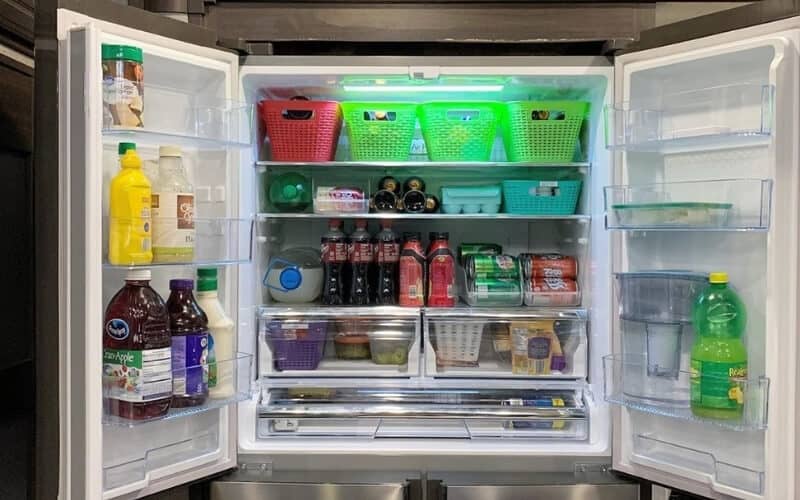

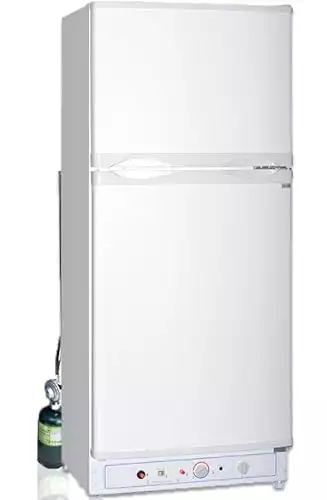
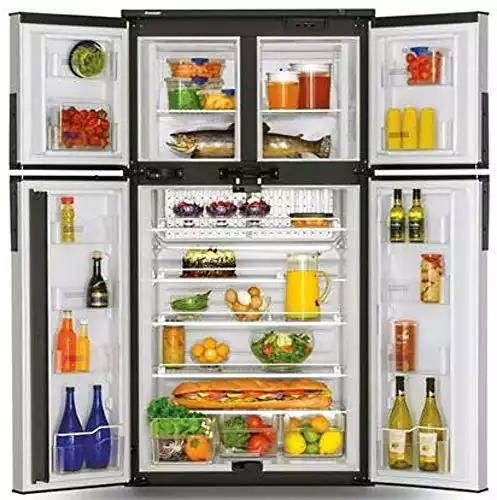
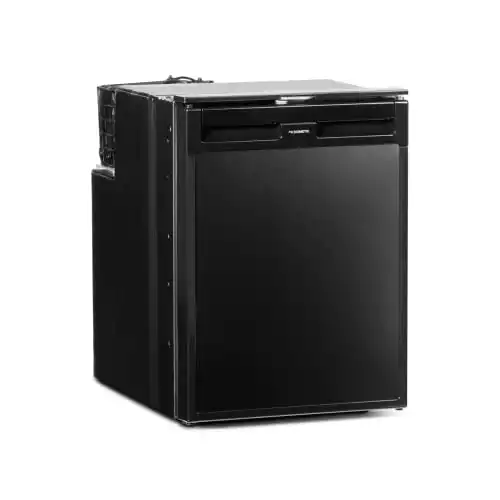


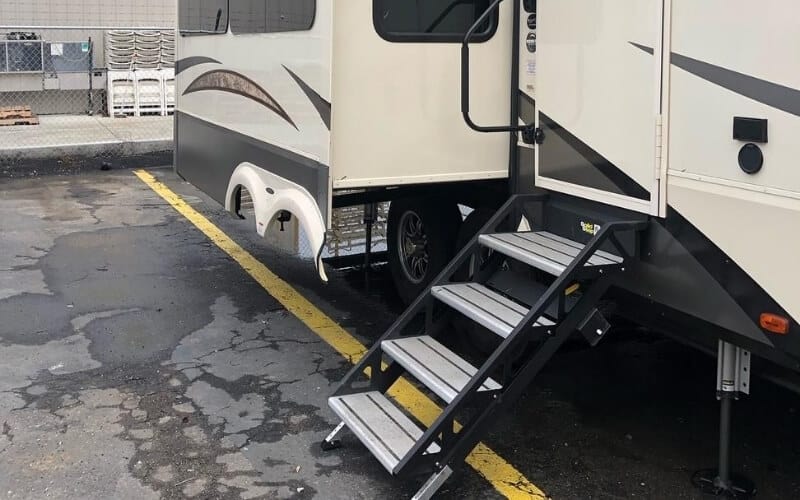
![6 Best Solar-Powered Generators for Portable Power Stations in [currentyear] 12 The Best Solar Generators For Camping](https://www.rvingknowhow.com/wp-content/uploads/2021/03/The-Best-Solar-Generators-For-Camping.jpg)
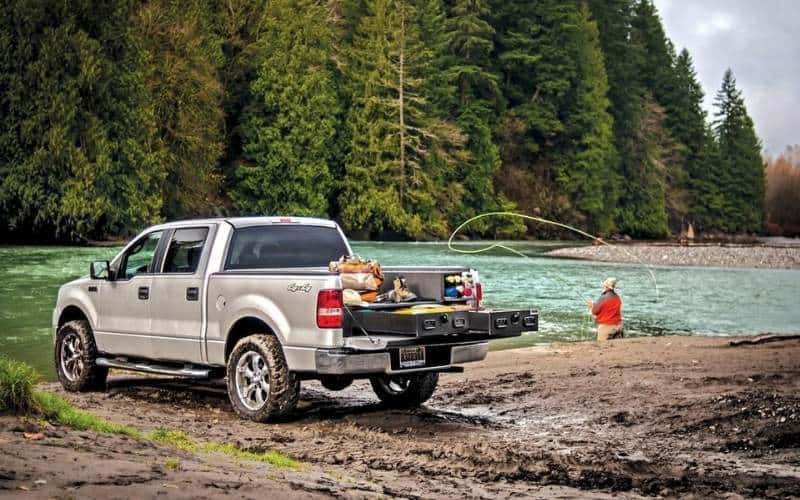
1 Comment
James Belisle
3 years agoWe have a year-and-a-half old Norcold NA8XLR and it is junk. It works on most days on gas, and only some on electric. The repair folks have been out numerous times and have given up on it. Norcold refuses to help us out on it.